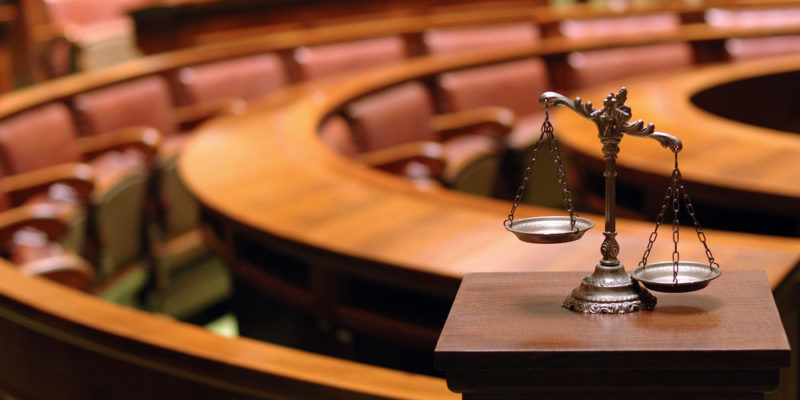We explain what the rules are, what their functions are and how they are classified. In addition, its general characteristics and some examples.
What are the Standards?
By norms is understood, in general, the set of provisions by common agreement within a community or a human organization, whose purpose is to stipulate the prohibited or permitted behaviors or actions, in the specific context in which the interaction takes place. Its purpose is to allow a harmonious coexistence in society .The term "norms" is often used as a synonym for social norms , that is, those that regulate social interaction between people . But the truth is that the rules can be from different areas, since there are rules for each dimension of society.
The set of specific rules in a field is often called "regulations" or "normative code" , and some of them may be held in greater respect than others.
Characteristics of the standards :
-
Concept
This meaning was transferred to the guidelines for social, professional, legal behavior or any other field, since it allows to "order" or "frame" human behavior according to a common accepted framework.
Temporality and context

The rules of any kind are applied in a period of time and a specific geographic location .
In that sense, they can vary from one place to another or from one era to the next , as the normed society also changes its social values .
For example, in the West eating with bare hands is considered a breach of etiquette in formal contexts, while in other regions of the world it is the accepted norm.
-
Function
 Norms of all kinds have a primary function: to guarantee that the human communities that share a specific time and space have a more or less similar code of conduct that allows them to coexist in a peaceful and mutually respectful way.
Norms of all kinds have a primary function: to guarantee that the human communities that share a specific time and space have a more or less similar code of conduct that allows them to coexist in a peaceful and mutually respectful way.Thus, the rules of courtesy, for example, allow two strangers to interact without running the risk of offending the other or being offended beforehand.
Collective character
Despite the fact that an individual may have intimate and personal norms for himself, it is generally considered that all types of norms must be social and collective, that is, they must serve to bind two or more individuals who accept it well. win.
A norm cannot govern a community that ignores or rejects it , just as it cannot operate if only one of the members of the community adheres to it and the others do not. Norms are a social fact.
-
Autonomy
 Despite the fact that all regulations require the acceptance of the participants to operate , not all regulations pass through our approval or through our consideration.
Despite the fact that all regulations require the acceptance of the participants to operate , not all regulations pass through our approval or through our consideration.Some are autonomous, that is, they come from our free will and may or may not be violated without major social (although personal) consequences.
Others, such as the laws are heterónomas: we are imposed by society and she, as a whole, forces us to accept and abide by them (or, otherwise, to live at the margins of society).
Coercibility
There are enforceable and non-enforceable rules. The former are characterized by their obligatory nature , that is, because they force us to act in a certain way, under pressure from others.
The incoercible rules, on the other hand, are left to the free interpretation of each one.
-
Types of standards
 We can distinguish the following types of norm:
We can distinguish the following types of norm:
- Legal. Those that regulate the legal interaction of people, that is, the one referring to the laws and regulations of jurisprudence .
- Morales . Those that distinguish good from evil, however subjective that may be, or that separate the socially acceptable from the disgusting.
- Religious . Those dictated by a creed or a faith, that is, an ethical and moral code dictated by aspecific church or religion.
- Social or courtesy . The protocol rules that mediate between people to ensure a friendly and respectful interaction.
- Label. Those that govern behavior in formal settings and establish a specific class code on how to eat, how to speak, etc.
- Professionals. Those that govern work contexts not from a juridical or legal point of view, but from respect and consideration for the other and for the work carried out.
One-sided or two-sided
We speak of unilateral norms when they must be accepted by all individuals in society , even though they may be in direct disagreement with what they propose. Instead, bilaterality is the condition of the rules in which a power and an obligation are established, that is, it may or may not apply depending on the particular case.
-
Examples
 Some examples of standards may be the following:
Some examples of standards may be the following:
- Pray before trying a bite of food (religious rule).
- Shake hands when meeting (social norm).
- Chew with a full mouth (etiquette rule).
- Not having intimate relationships with minors (moral norm).
- Do not appropriate the property of others (legal rule).
Importance
The rules play a vital role in all forms of human organization since they allow the implantation of a common code, identical for all , that structures human interactions and allows all members to know the “rules of the game”.
Punishments can be designated in case of violating them , or eventual rewards in case of faithfully following them.
The above content published at Collaborative Research Group is for informational and educational purposes only and has been developed by referring reliable sources and recommendations from technology experts. We do not have any contact with official entities nor do we intend to replace the information that they emit.
Veronica is a culture reporter at Collaborative Research Group, where she writes about food, fitness, weird stuff on the internet, and, well, just about anything else. She has also covered technology news and has a penchant for smartphone stories. .
Leave a reply
Your email address will not be published. Required fields are marked *Recent post

Sport: What Is It, Types, Risks, Features, Characteristics and Examples

Dogs: Emergence, Features, Characteristics, Feeding and Breeds

Story: Definition, Elements, Structure, Features and Characteristics

